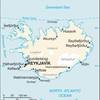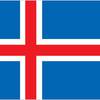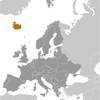Iceland [+]Compare [E]dit [H]istory
Aliases: Island, Lydveldid Island, Republic of IcelandObject «Iceland» was created due to
Add new object to «Iceland» or move existing objects here.
Object «Iceland» has attributes [Show empty attributes][Hide empty attributes]
| Attribute | Value |
|---|---|
| Geography | |
| Area | 103,000 km² |
| Continent | Europe |
| Land area | 100,250 km² |
| Water area | 2,750 km² |
| Land boundaries | 0 km |
| Border countries | Add |
| Coastline | 4,970 km |
| Mean elevation | 557 m |
| Lowest point | 0 m |
| Highest point | 2,110 m |
| People | |
| Population | 350,734 |
| Official languages | Add |
| Religion | Evangelical Lutheran Church of Iceland |
| Government | |
| Long country name | Republic of Iceland |
| Short country name | Iceland |
| Long local name | Lydveldid Island |
| Short local name | Island |
| Former name | Add |
| Government type | Unitary parliamentary republic |
| Capital | Reykjavik |
| Economy | |
| GDP (PPP) | 18,180,000,000 USD |
| GDP (OER) | 24,480,000,000 USD |
| GDP (real growth rate) | 4 % |
| GDP - per capita (PPP) | 52,200 USD |
| Gross national saving | 25.8 % of GDP |
| Labor force | 198,700 |
| Unemployment rate | 2.8 % |
| Population below poverty line | Add |
| Budget revenues | 10,390,000,000 USD |
| Budget expenditures | 10,020,000,000 USD |
| Military expenditures | 0.3 % of GDP |
| Taxes and other revenues | 42.4 % of GDP |
| Budget surplus or deficit | 1.5 % of GDP |
| Public debt | 40 % of GDP |
| Inflation rate | 1.8 % |
| Central bank discount rate | 5.4 % |
| Commercial bank prime lending rate | 7.26 % |
| Stock of narrow money | 4,945,000,000 USD |
| Stock of broad money | 4,945,000,000 USD |
| Stock of domestic credit | 24,510,000,000 USD |
| Market value of publicly traded shares | 2,825,000,000 USD |
| Current account balance | 857,000,000 USD |
| Exports | 4,957,000,000 USD |
| Imports | 6,525,000,000 USD |
| Reserves of foreign exchange and gold | 6,567,000,000 USD |
| External debt | 21,700,000,000 USD |
| National currency | Icelandic kronur |
| National currency (code) | ISK |
| National currency (symbol) | kr |
| National currency rate to USD | 111.7 |
Settled by Norwegian and Celtic (Scottish and Irish) immigrants during the late 9th and 10th centuries A.D., Iceland boasts the world's oldest functioning legislative assembly, the Althingi, established in 930. Independent for over 300 years, Iceland was subsequently ruled by Norway and Denmark. Fallout from the Askja volcano of 1875 devastated the Icelandic economy and caused widespread famine. Over the next quarter century, 20% of the island's population emigrated, mostly to Canada and the US. Denmark granted limited home rule in 1874 and complete independence in 1944. The second half of the 20th century saw substantial economic growth driven primarily by the fishing industry. The economy diversified greatly after the country joined the European Economic Area in 1994, but Iceland was especially hard hit by the global financial crisis in the years following 2008. The economy is now on an upward trajectory, fueled primarily by a tourism and construction boom. Literacy, longevity, and social cohesion are first rate by world standards.
Similar objects
Most often compared with
Everyone can something to edit or add.
There was one edit, no edits waiting approval. Last edited by jmcdermott(9391), Sep 16, 2019 (61 fields were changed)
Help · Contact us · Disclaimer · Contributors · Developers · Donate


